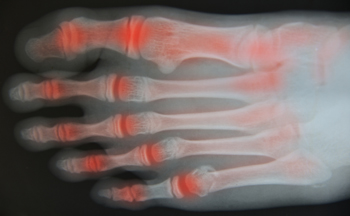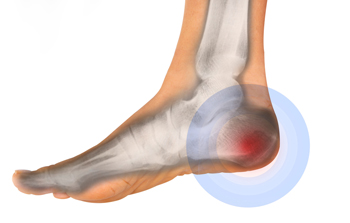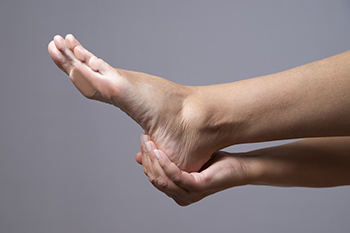Connect With Us
Blog
Items filtered by date: April 2023
Can Walking Help Arthritis in the Feet?

Research has shown that walking is one of the best low-impact activities that can help people who have arthritis in their feet. This condition can affect people of all ages, and it may be more prevalent among the elderly. Walking can also be beneficial for overall physical health, and many patients notice the positive feeling that is associated with walking. There are three main categories of arthritis, and these are referred to as osteo, rheumatoid, and post-traumatic arthritis. Walking can strengthen the bones in the feet, and stress on the joints may be reduced. It is beneficial to start out slowly, and steps can be increased as time progresses. Patients who have arthritis in their feet may reap the benefits of walking by stretching first, drinking plenty of water, and wearing shoes that fit correctly. Additionally, the range of motion in the ankle may be improved when specific stretches are performed. If you would like more information about how walking may help arthritis in the feet, it is suggested that you consult with a podiatrist who can help you manage this painful condition.
Arthritis can be a difficult condition to live with. If you are seeking treatment, contact Dr. Nicholas Przystawski from Central Florida Foot Care, PA. Our doctor can provide the care you need to keep you pain-free and on your feet.
Arthritic Foot Care
Arthritis is a term that is commonly used to describe joint pain. The condition itself can occur to anyone of any age, race, or gender, and there are over 100 types of it. Nevertheless, arthritis is more commonly found in women compared to men, and it is also more prevalent in those who are overweight. The causes of arthritis vary depending on which type of arthritis you have. Osteoarthritis for example, is often caused by injury, while rheumatoid arthritis is caused by a misdirected immune system.
Symptoms
- Swelling
- Pain
- Stiffness
- Decreased Range of Motion
Arthritic symptoms range in severity, and they may come and go. Some symptoms stay the same for several years but could potentially get worse with time. Severe cases of arthritis can prevent its sufferers from performing daily activities and make walking difficult.
Risk Factors
- Occupation – Occupations requiring repetitive knee movements have been linked to osteoarthritis
- Obesity – Excess weight can contribute to osteoarthritis development
- Infection – Microbial agents can infect the joints and trigger arthritis
- Joint Injuries – Damage to joints may lead to osteoarthritis
- Age – Risk increases with age
- Gender –Most types are more common in women
- Genetics – Arthritis can be hereditary
If you suspect your arthritis is affecting your feet, it is crucial that you see a podiatrist immediately. Your doctor will be able to address your specific case and help you decide which treatment method is best for you.
If you have any questions, please feel free to contact our office located in Leesburg, FL . We offer the newest diagnostic and treatment technologies for all your foot care needs.
The Many Types of Heel Pain

The heels of the feet endure a great deal of stress and, therefore, are often open to pain and injury. The most common causes of heel pain are plantar fasciitis, Achilles tendonitis, bone spurs, and stress fractures. Heel bursitis, Sever’s disease, and Haglund’s syndrome are other causes that occur less frequently. Pain can be experienced behind the heel, within the bone itself, and under the heel. Simply stepping on a hard rock can cause pain under the heel, but the most common cause is plantar fasciitis. This is an overuse injury to the tissue that runs under the foot and connects the heel to the toes. Chronic plantar fasciitis can also lead to the development of heel spurs on the calcaneus, the main heel bone. Inflammation to the Achilles tendon from overuse is the most frequent cause of pain behind the heel. A podiatrist, a medical doctor who is trained in ailments of the feet and ankles, can diagnose the cause of heel pain by conducting a number of tests. These may include X-rays and electronic imaging tests. If you are suffering from heel pain and are unsure of the cause, it is suggested that you make an appointment with a podiatrist today.
Many people suffer from bouts of heel pain. For more information, contact Dr. Nicholas Przystawski of Central Florida Foot Care, PA. Our doctor can provide the care you need to keep you pain-free and on your feet.
Causes of Heel Pain
Heel pain is often associated with plantar fasciitis. The plantar fascia is a band of tissues that extends along the bottom of the foot. A rip or tear in this ligament can cause inflammation of the tissue.
Achilles tendonitis is another cause of heel pain. Inflammation of the Achilles tendon will cause pain from fractures and muscle tearing. Lack of flexibility is also another symptom.
Heel spurs are another cause of pain. When the tissues of the plantar fascia undergo a great deal of stress, it can lead to ligament separation from the heel bone, causing heel spurs.
Why Might Heel Pain Occur?
- Wearing ill-fitting shoes
- Wearing non-supportive shoes
- Weight change
- Excessive running
Treatments
Heel pain should be treated as soon as possible for immediate results. Keeping your feet in a stress-free environment will help. If you suffer from Achilles tendonitis or plantar fasciitis, applying ice will reduce the swelling. Stretching before an exercise like running will help the muscles. Using all these tips will help make heel pain a condition of the past.
If you have any questions please contact our office located in Leesburg, FL . We offer the newest diagnostic and treatment technologies for all your foot and ankle needs.
Gout Pain Can Be Managed
Where Is the Tarsal Tunnel Located?

There is a narrow passageway that is found inside the ankle and is connected by soft tissue and bone. This is known as the tarsal tunnel, and the posterior tibial nerve is located within this area. Tarsal tunnel syndrome may develop if this nerve becomes damaged, and may happen if there is consistent pressure. The symptoms that patients notice are sharp pain, and a tingling or burning sensation. There may be existing medical conditions that may lead to the development of tarsal tunnel syndrome. These can consist of having flat feet, diabetes, or inflammation from arthritis. A proper diagnosis consists of having a Tinel’s sign test performed. This is done by pressing the affected nerve with the intention of triggering symptoms that represent tarsal tunnel syndrome. Resting the foot can bring temporary relief, and it is suggested that you speak with a podiatrist who can offer options for permanent relief.
Tarsal tunnel syndrome can be very uncomfortable to live with. If you are experiencing tarsal tunnel syndrome, contact Dr. Nicholas Przystawski of Central Florida Foot Care, PA. Our doctor can provide the care you need to keep you pain-free and on your feet.
Tarsal Tunnel Syndrome
Tarsal tunnel syndrome, which can also be called tibial nerve dysfunction, is an uncommon condition of misfiring peripheral nerves in the foot. The tibial nerve is the peripheral nerve in the leg responsible for sensation and movement of the foot and calf muscles. In tarsal tunnel syndrome, the tibial nerve is damaged, causing problems with movement and feeling in the foot of the affected leg.
Common Cause of Tarsal Tunnel Syndrome
- Involves pressure or an injury, direct pressure on the tibial nerve for an extended period of time, sometimes caused by other body structures close by or near the knee.
- Diseases that damage nerves, including diabetes, may cause tarsal tunnel syndrome.
- At times, tarsal tunnel syndrome can appear without an obvious cause in some cases.
The Effects of Tarsal Tunnel Syndrome
- Different sensations, an afflicted person may experience pain, tingling, burning or other unusual sensations in the foot of the affected leg.
- The foot muscles, toes and ankle become weaker, and curling your toes or flexing your foot can become difficult.
- If condition worsens, infections and ulcers may develop on the foot that is experiencing the syndrome.
A physical exam of the leg can help identify the presence of tarsal tunnel syndrome. Medical tests, such as a nerve biopsy, are also used to diagnose the condition. Patients may receive physical therapy and prescriptive medication. In extreme cases, some may require surgery.
If you have any questions please feel free to contact our office located in Leesburg, FL . We offer the newest diagnostic and treatment technologies for all your foot and ankle needs.
What Is a Plantar Fibroma?

A plantar fibroma is a ball of fibrous tissue that develops in the arch of the foot. Though plantar fibromas are benign, they can cause a great deal of pain and interfere with walking and standing. Interestingly, these happen in males more often than females and in middle aged versus older people. When several fibromas develop in the feet, it is called plantar fibromatosis. Pain can worsen as fibromas become larger, from wearing shoes that are too tight, from walking barefoot, or from standing too long. These lumps have no known cause, but may be genetic. They are more common in those of Northern European heritage and less common in Asians. Some experts think trauma and repetitive injuries to the feet may be involved in the development of plantar fibromas. Medical conditions, such as liver disease and diabetes, and lifestyle factors, including alcohol abuse, might also contribute to, but not cause, formation of plantar fibromas. Also, certain medications and supplements are associated with this condition. If you think you have a plantar fibroma, it is suggested that you see a podiatrist for a proper diagnosis and treatment.
A plantar fibroma may disrupt your daily activities. If you have any concerns, contact Dr. Nicholas Przystawski of Central Florida Foot Care, PA. Our doctor can provide the care you need to keep you pain-free and on your feet.
Plantar Fibroma
A plantar fibroma is a fibrous knot in the arch of the foot. It is embedded in the plantar fascia which is a band of tissue that extends from the heel to the toes along the bottom of the foot. There can be multiple plantar fibromas in the feet at the same time. There are no known causes for this condition. If you have a plantar fibroma, there will be a bump in the arch of your foot that cannot be missed. Any associated pain is most often due to a shoe rubbing against the nodule. Non-surgical options, such as steroid injections, physical therapy, and orthotics should be tried first. Surgery is a last resort and is the only thing that will remove a plantar fibroma entirely. Consult with a podiatrist for a proper diagnosis and to determine the treatment regimen that is right for you.
What Causes a Plantar Fibroma?
While there are no specific causes identified, a plantar fibroma can possibly come from genetic predisposition or the formation of scar tissue that forms from healing the tears in the plantar fascia.
What Are the Symptoms of a Plantar Fibroma?
There will be a noticeable lump in the arch of the foot that may or may not cause pain. If pain is felt, it is typically because a shoe is rubbing up against the lump or when walking or standing barefoot.
Treatment and Prevention
A plantar fibroma will not disappear without treatment, but it can get smaller and be a non-issue. If pain persists, a podiatrist examines the foot and when the arch of the foot is pressed, pain can be felt down to the toes. An MRI or biopsy might be performed to help diagnose or evaluate the plantar fibroma. The following non-surgical options are generally enough to reduce the size and pain of these nodules:
- Steroid injections
- Orthotics
- Physical therapy to help apply anti-inflammatory creams on the bump
Surgery is considered if the mass increases in size and the patient continues to feel pain after non-surgical methods are tried.
If you have any questions please feel free to contact our office located in Leesburg, FL . We offer the newest diagnostic tools and technology to treat your foot and ankle needs.

